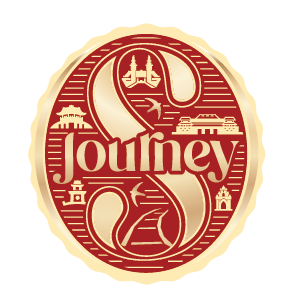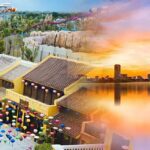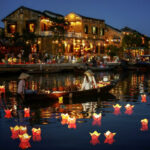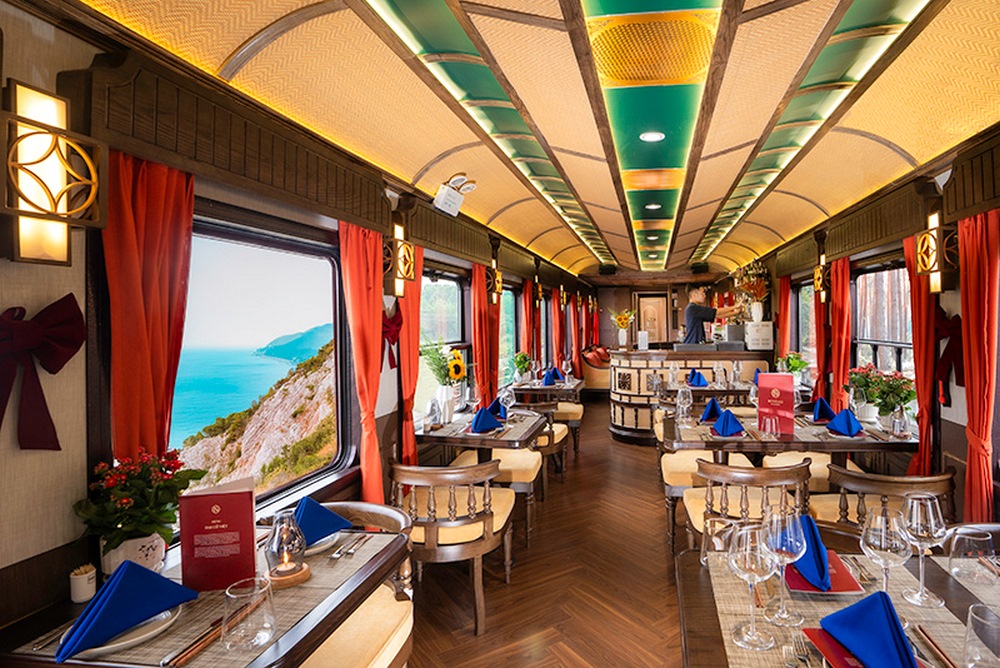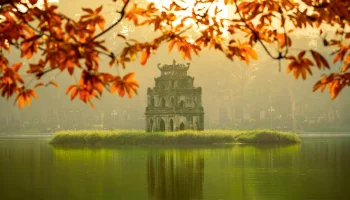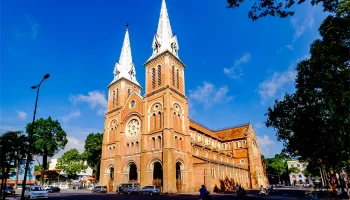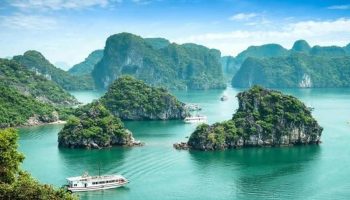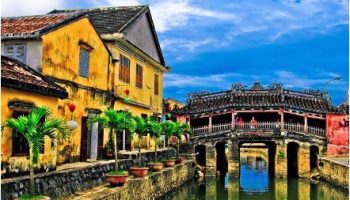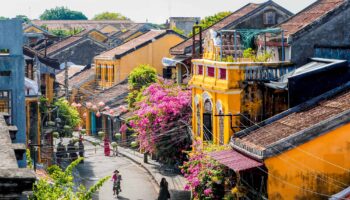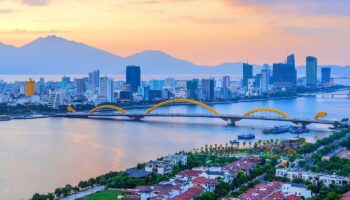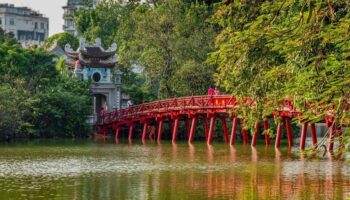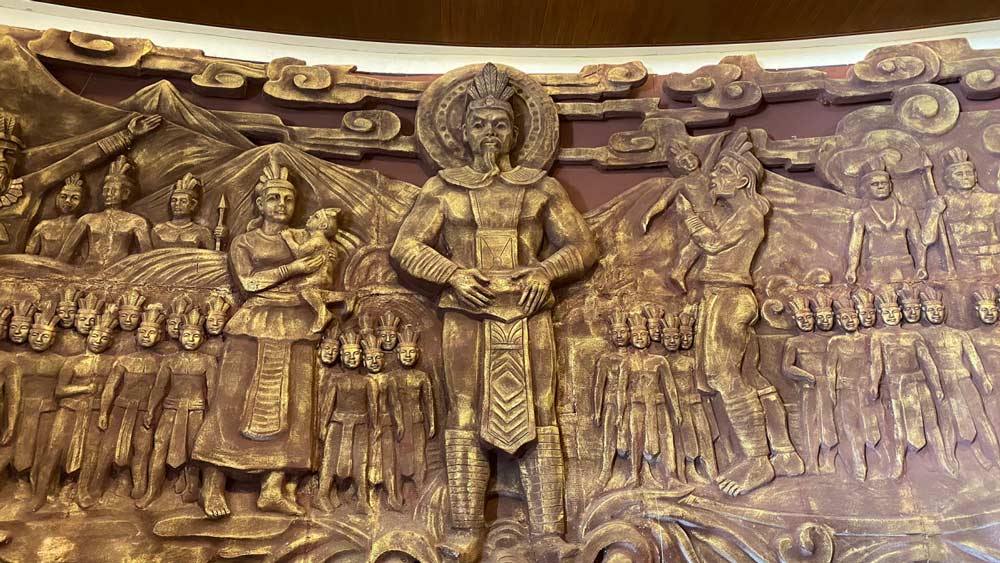
Vietnam’s Cultural Heritage: Understanding the Origins of the Vietnamese People
Vietnam is a country of resilience reflected through layers of history, and each story is the foundation that shapes the country’s culture and traditions today. Understanding the history of the Vietnamese people, you acquired a fascinating interpretation of the nation’s charming spirit.
Table of Contents
ToggleThe Legend of the Dragon and Fairy Descendants
The Legend of the Dragon and Fairy Descendants is the most significant story about the origin of the Vietnamese people. It is a legendary interpretation and is cited to explain the beginnings of Vietnam.
The story is about a Dragon Lord named Lạc Long Quân and a Fairy Queen named Âu Cơ who fell in love, and together, they had 100 children. But there were differences in their life path because Lạc Long Quân was connected to the lowlands, while Âu Cơ belonged to the highlands. Seeing such differences, they decided to part ways and each took 50 of their children to move to their land. Before they parted, they made a vow to always be united in spirit, no matter the distance.
Thus, the Vietnamese people are said to be the descendants of the 100 children with the Dragon (Lạc Long Quân) and the Fairy (Âu Cơ) being the ancestors.
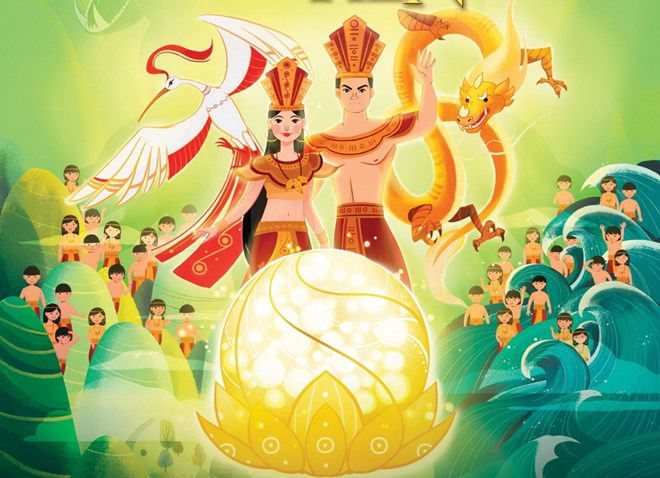 The story conveys core values and principles that shaped Vietnamese people’s identity and worldview. It can be seen in the culture and mindset that heavily influence societal beliefs and practices.
The story conveys core values and principles that shaped Vietnamese people’s identity and worldview. It can be seen in the culture and mindset that heavily influence societal beliefs and practices.
- Unity and Kinship: The shared ancestry formed with love facilitates a sense of national unity and familial bond. It also emphasizes the respect for diversity where despite differences in regions or backgrounds, they are one strong united nation.
- Harmony with Nature: The story illustrates the connection to both land and water where this duality teaches Vietnamese people the importance of balance and respect to the land they are living.
- Resilience and Adaptability: The separation of their ancestors symbolizes the ability to adapt to differences in environments and circumstances. Such quality can be seen throughout the history of foreign invasions and natural disasters.
- Collective Strength: The story highlights the strength and potential that Vietnamese people inherit from their legendary ancestors and continue to strengthen them over generations.
Vietnamese Civilization Throughout History
There is evidence of early settlements of Vietnamese people throughout Southeastern Asia, traced back to prehistoric times. It was discovered that Vietnam was home to some of the world’s oldest civilizations.
1. Prehistoric Era
Early Settlements
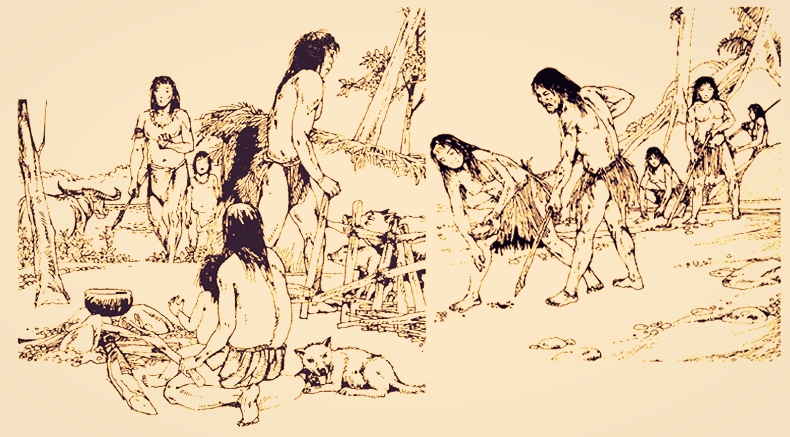 The earliest evidence of Vietnamese people’s settlement dates back to about 500,000 years ago. There are discoveries of stone tools in caves like Tham Ha, and Son Vi in Northern Vietnam and the Red River Delta, revealing evidence of early agriculture and pottery development.
The earliest evidence of Vietnamese people’s settlement dates back to about 500,000 years ago. There are discoveries of stone tools in caves like Tham Ha, and Son Vi in Northern Vietnam and the Red River Delta, revealing evidence of early agriculture and pottery development.
The Dong Son Culture
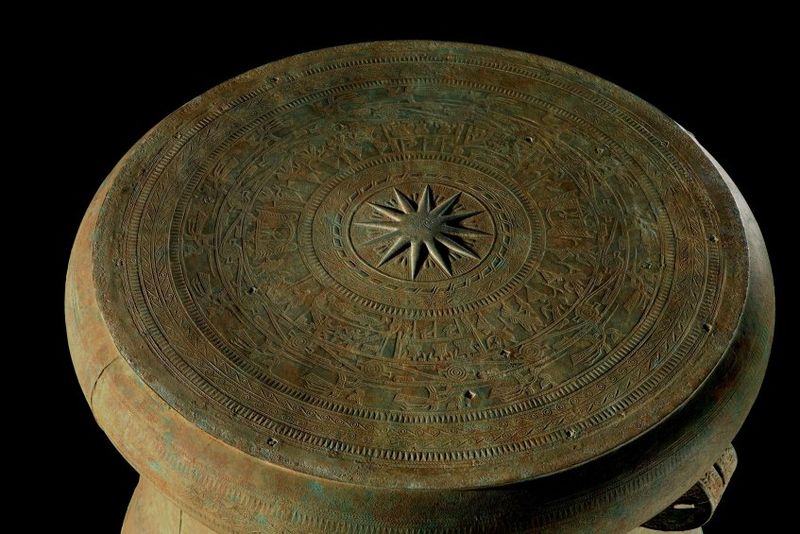 The Dong Son civilization played a vital role in shaping the country’s way of life. This civilization flourished around 1000 BCE in North Vietnam and has a signature bronze casting, as seen on Dong Son drums. To this day, it remains one of Vietnam’s ancient heritage sites.
The Dong Son civilization played a vital role in shaping the country’s way of life. This civilization flourished around 1000 BCE in North Vietnam and has a signature bronze casting, as seen on Dong Son drums. To this day, it remains one of Vietnam’s ancient heritage sites.
2. The Hồng Bàng Dynasty and the Mythical Era
The Hung Kings – Legendary Origins
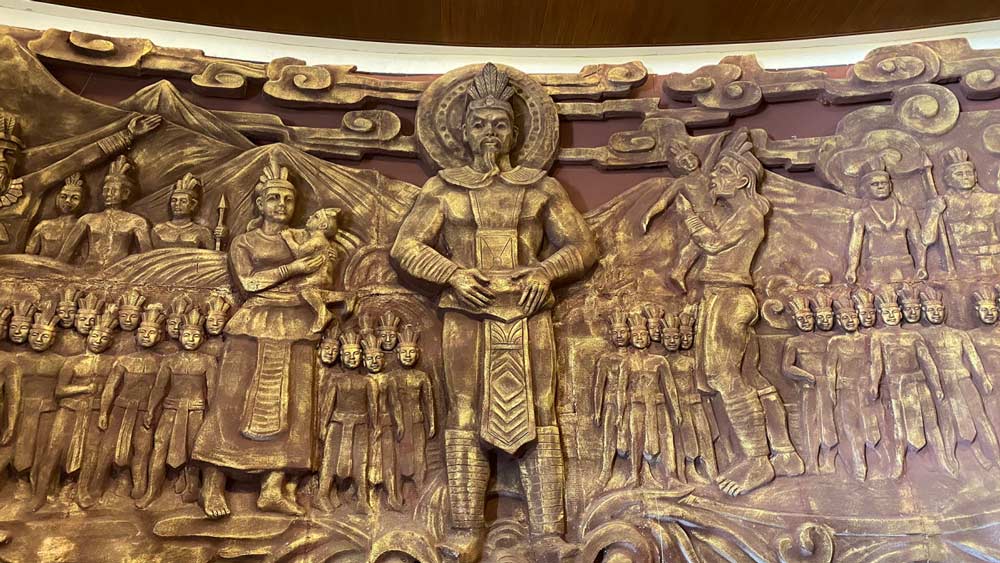 The prime and beginning of the Vietnamese civilization that shaped the formation of Vietnam’s identity was the Hung Kings period – the legendary founders of Vietnam.
The prime and beginning of the Vietnamese civilization that shaped the formation of Vietnam’s identity was the Hung Kings period – the legendary founders of Vietnam.
According to Vietnamese legend, the first Hung King, Hung Vuong, founded the Van Lang kingdom, which is considered the first state of Vietnam.
During the Hung Kings period, the early Vietnamese tribes were unified into one, with the development of the rich cultural and social structure that formed the backbone of Vietnamese civilization.
It can be experienced every year on March 10 when the people celebrate the death anniversary of the Hung Kings.
3. Chinese Domination Period
The Han Dynasty Conquest
The Han Dynasty annexed Vietnam, marking the beginning of the Chinese invasion for years. As a result, Vietnam incorporated various Chinese practices, such as governance, philosophy, and culture.
Resistance and Rebellion
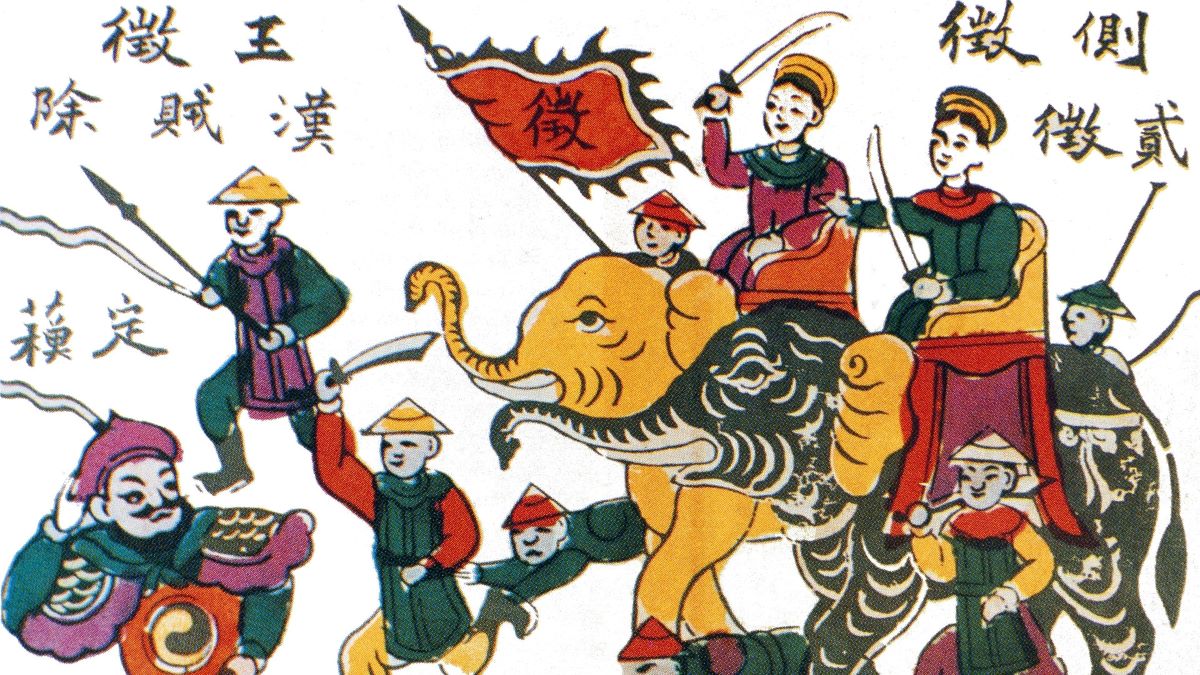 Vietnamese people showcase a great deal of resilience fiercely with famous uprisings including:
Vietnamese people showcase a great deal of resilience fiercely with famous uprisings including:
- The Trung Sisters’ rebellion, led by 2 heroic women on elephant back, restored independence for the people.
- The Lady Trieu Rebellion was another movement led by a fearless woman to unite the nation.
4. Independent Dynasties
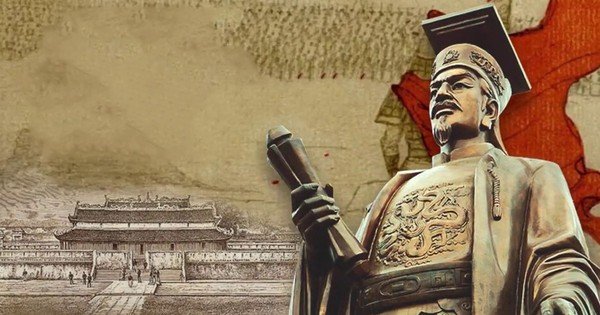 Vietnam witnessed generations of dynasty with each contributing to the development of the country. They set the foundation to what is made of Vietnam today with notable dynasties including:
Vietnam witnessed generations of dynasty with each contributing to the development of the country. They set the foundation to what is made of Vietnam today with notable dynasties including:
- Ngo, Dinh, and Early Dynasties: The early dynasties established a centralized monarchy that reinforced the country’s identity and values. The most notable story of independence is General Ngo Quyen’s victory at the Battle of Bach Dang River.
- Ly Dynasties: These were the golden eras of Vietnamese civilization when the Ly Dynasty established Thang Long, known as Hanoi today
- Tran Dynasty: The Tran Dynasty was the most resilient as they defeated 3 Mongol invasions.
- Le Dynasty: The country achieved cultural and territorial consolidation under the ruler Le Loi. This era also saw the expansion to the South.
- Nguyen Dynasty: Vietnam was unified under this last imperial dynasty with notable rising Western influences. The legacy of the era can be seen in Hue Imperial City and Hoi An Ancient Town.
5. Colonization and Wars
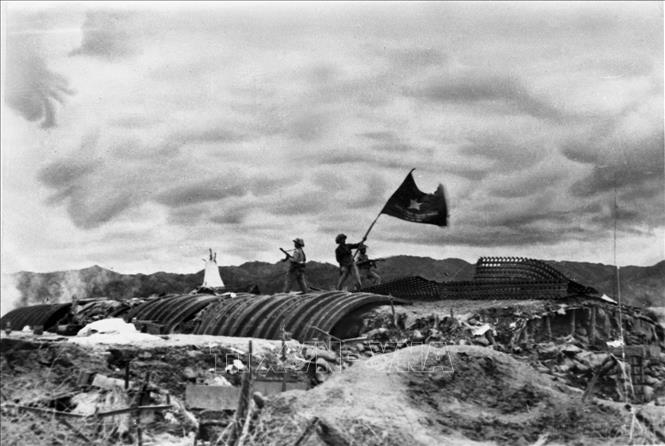
Colonial Rule
France colonized Vietnam in the mid-19th century which impacted the country’s overall development. It was the period when prominent leaders like Phan Boi Chau or Ho Chi Minh rose and helped form the spirit and independence of the people.
First Indochina War
The movement to fight for freedom against France was the epitome of the Vietnamese people’s spirit. The war ended with the victory at Dien Bien Phu, leading to the Geneva Accords.
Vietnam War
The extraordinary history of uniting North and South Vietnam, involving the United States is a profound example of Vietnamese people’s determination. This significant period marked the beginning of modern Vietnam today.
Geographic and Ethnic Diversity in Vietnam
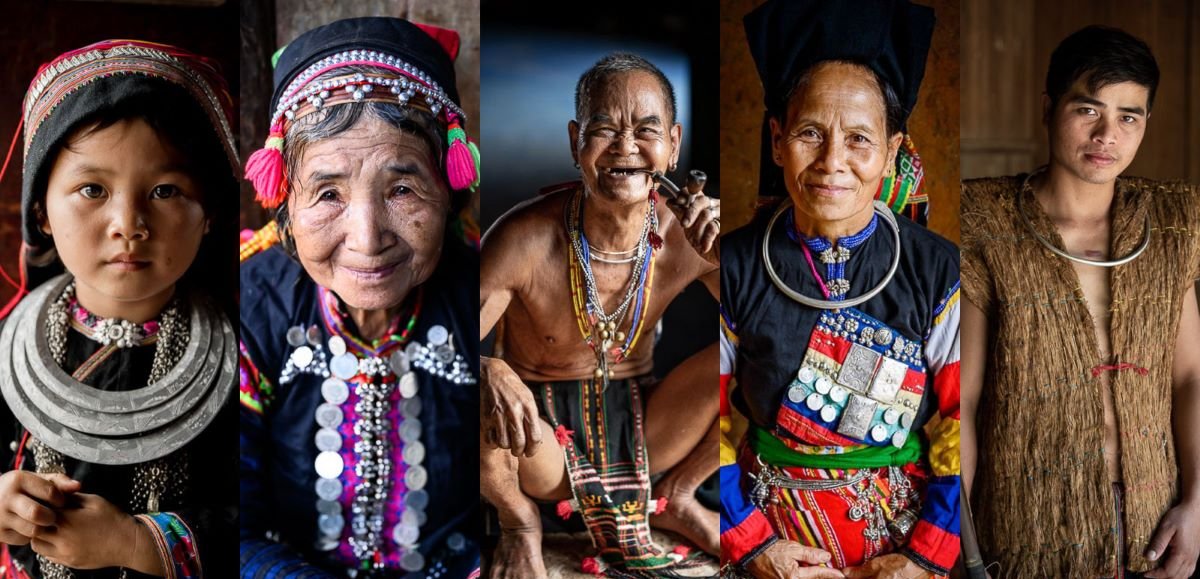 Vietnam is home to more than 50 distinct ethnic groups, each with its own language, customs, and beliefs. The majority group, known as the Kinh, makes up about 85% of the population. But the country also comprises other ethnic minorities from the H’mong and Tay to the Cham people, and each adds to the layers of charm that the country carries.
Vietnam is home to more than 50 distinct ethnic groups, each with its own language, customs, and beliefs. The majority group, known as the Kinh, makes up about 85% of the population. But the country also comprises other ethnic minorities from the H’mong and Tay to the Cham people, and each adds to the layers of charm that the country carries.
The diversity within Vietnam’s ethnic groups can be seen within regions. The north is known for its Hanoi and the Hoa Lu ancient capital, while the central region is rich in ancient temples and monuments, such as the My Son Sanctuary. In the south, the bustling city of Ho Chi Minh City contrasts with the tranquil landscapes of the Mekong Delta. These regional differences in culture, cuisine, and dialects further highlight the richness of Vietnamese culture.
Historical Roots of Modern Vietnamese People’s Practices
Modern practices in Vietnam are the integration of history development where these practices often blend ancient traditions with modern life. Its purpose is to strengthen the core beliefs and values of the people.
Worship of Ancestors
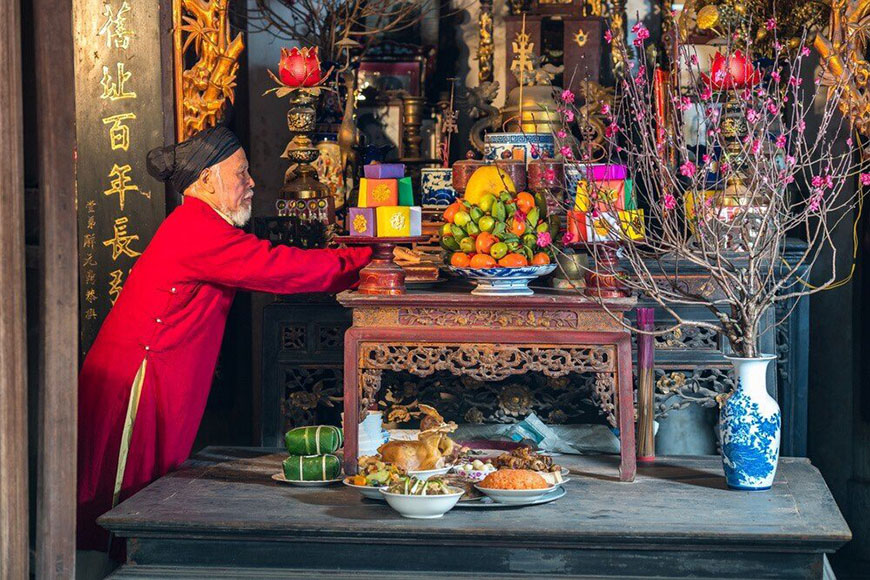
- Modern Practice: Every Vietnamese home must have an ancestor altar with the family offerings of fruits, incense, and food for protection.
- Historical Roots: The tradition dates back to the early Dong Son which honored the spirits of the deceased.
Community Spirit in Governance
- Modern Practice: In urban areas, Vietnamese neighborhoods often have ward-level governance that is in charge of local affairs
- Historical Roots: This links back to the village system (làng) where communal councils handled disputes and the peacefulness of the community
Betel Leaves and Areca Nuts
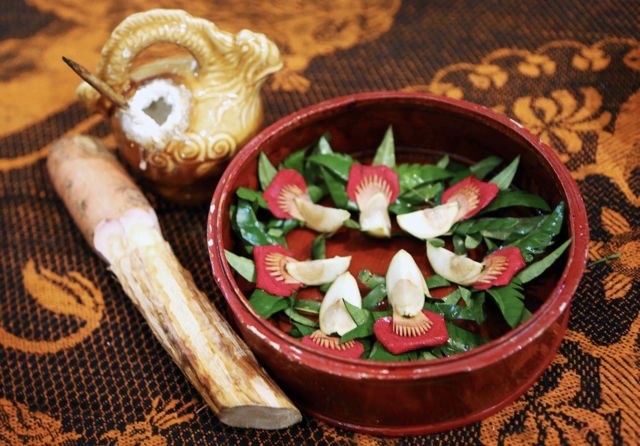
- Modern Practice: Chewing betel leaves is a ceremonial practice during special occasions such as weddings. They are usually chewed together for the stimulant and narcotic effects.
- Historical Roots: These practices are traced back thousands of years and can be found in the Philippines and China.
Lunar Calendar in Daily Life
- Modern Practice: Important decisions like setting wedding dates and building houses are made using the lunar calendar.
- Historical Roots: It was introduced during the Chinese invasion period as part of the agricultural cycles and spiritual beliefs.
Street Food Culture
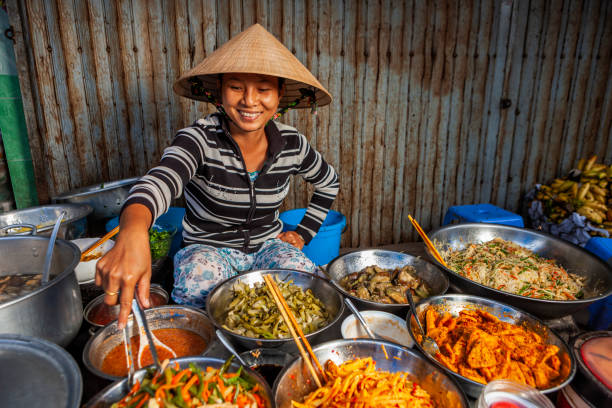
Vietnamese woman selling home made food at her food stand on the local market, Central Vietnam.
- Modern Practice: The highlight when visiting Vietnam is the endless street food that appears in every nook and cranny of the stress.
- Historical Roots: This culture dates back to the Nguyen Dynasty when vendors served fast and affordable meals to workers and travelers. The influence of Chinese and French cuisine is also a factor contributing to this tradition.
Experience Immersive Vietnamese People’s Culture
Experience immersive Vietnamese people’s culture is a journey of hearty meals, a fuzzy feel, and unexpected adventure. Whether you’re a history enthusiast, a foodie, or someone looking to connect with local communities, the nation has everything to offer.
Explore Vietnam’s Historic Cities and Towns
Vietnam’s historic cities and towns offer endless excitement to experience its rich cultural heritage and vibrant way of life.
- Northbound: Wander through Hanoi, specifically the Old Quarter, the Temple of Literature, or Ho Chi Minh’s Mausoleum to delve into Vietnam’s history and leadership. Embark on a journey to Sapa or Mai Chau, home to ethnic minorities like the Hmong and Thai.
- Central Vietnam: Head Hoi An and Hue – the former imperial capital to explore the grandeur of such a period and visit royal tombs that echo the legacy of the Nguyễn Dynasty. Here, you can truly live through an authentic regal experience.
- Southbound: The dynamic of Ho Chi Minh portrays a balance of modern mixes with history. Visit landmarks like the War Remnants Museum, Reunification Palace, or Ben Thanh Market to experience the city’s vibrant culture.
- Across the country: Traveling by train offers a slow-paced, immersive way to explore all of Vietnam. For an authentic and immersive experience, consider traveling with SJourney, Vietnam’s luxury train service, where you get an all-inclusive service that includes deep cultural connections and a comfortable stay.
Explore more about luxury train SJourney and its immersive off-train excursions here
Savor Vietnamese Cuisine Beyond the Classics
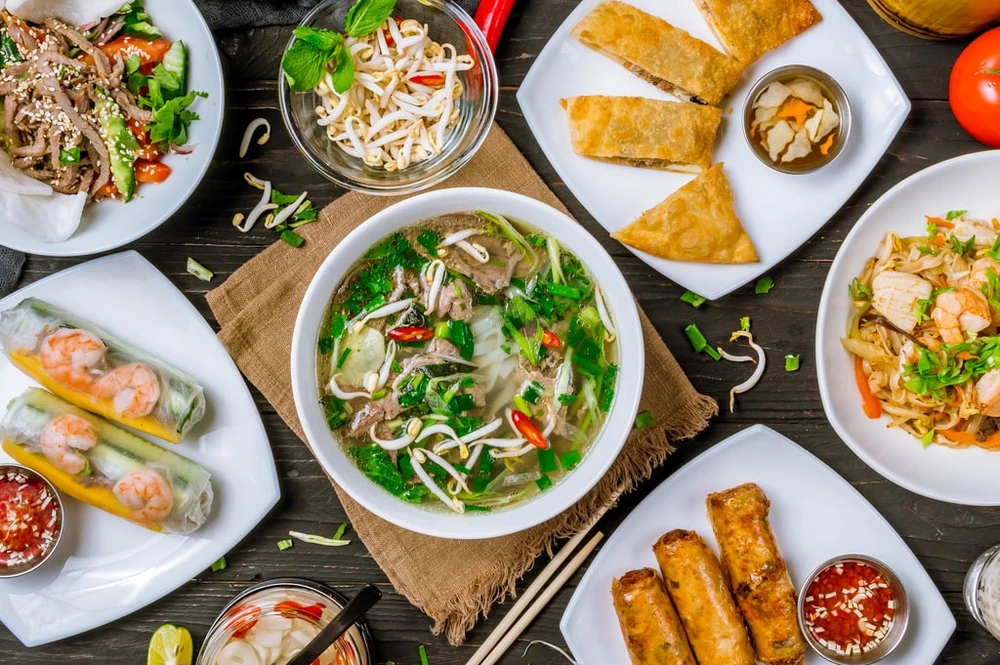 Vietnamese cuisine is as diverse as its regions, and the best way to explore it is by going beyond the familiar. Activities such as a cooking class to learn how to make dishes like bun cha or banh xeo deepen the connection and appreciation of the place.
Vietnamese cuisine is as diverse as its regions, and the best way to explore it is by going beyond the familiar. Activities such as a cooking class to learn how to make dishes like bun cha or banh xeo deepen the connection and appreciation of the place.
Street food enthusiasts can refresh themselves each day with the bustling markets of Hanoi or Ho Chi Minh City, where vendors offer any meal that you desire from steaming bowls of pho to crispy banh khot.
For a more adventurous soul, try delicacies such as weevil which is served alive with fish sauce or balut. These dishes might challenge your taste buds but it’s part of the unconventional experience to be truly immersed in the Vietnamese people’s life.
Embrace Vietnam’s Art and Performance
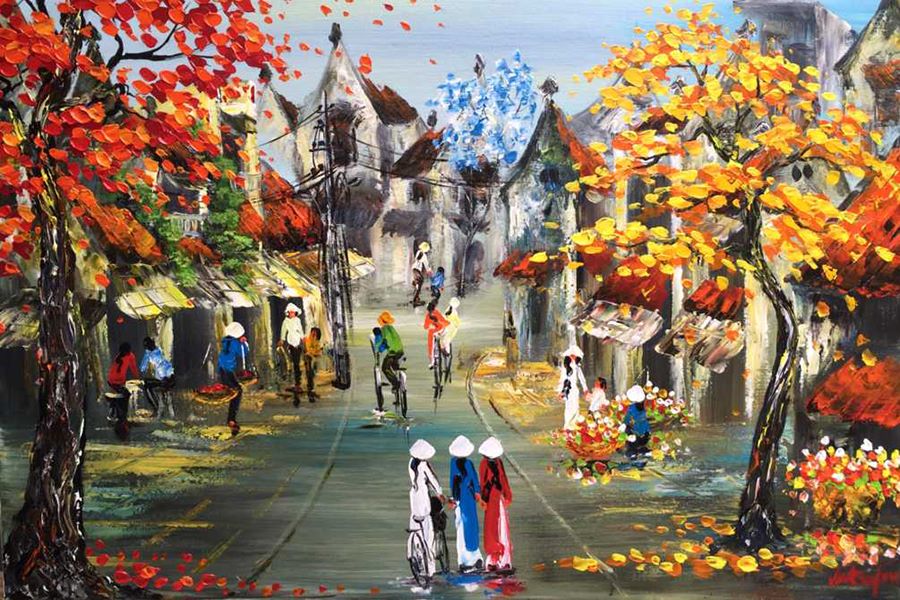 Vietnam’s timeless art forms offer another way of cultural immersion. Observe a traditional water puppetry show in Hanoi that dates back to the 11th century which is a brilliant storytelling way of folklore and legends.
Vietnam’s timeless art forms offer another way of cultural immersion. Observe a traditional water puppetry show in Hanoi that dates back to the 11th century which is a brilliant storytelling way of folklore and legends.
For a sound experience, head to Central Highlands, a UNESCO-recognized cultural heritage. These gongs are part of ethnic groups like the Ede and Ba Na that are most often used in rituals and festivals.
For a more modern touch, explore Vietnamese lacquer paintings and embroidery – two of the most celebrated fine art traditions in the country, which is why participating in workshops to create your own lacquer art piece is an excellent way to gain insights into the culture.
Read more about the cultural elegance of Vietnamese arts and crafts here.
Experience the Warmth of Vietnamese Hospitality
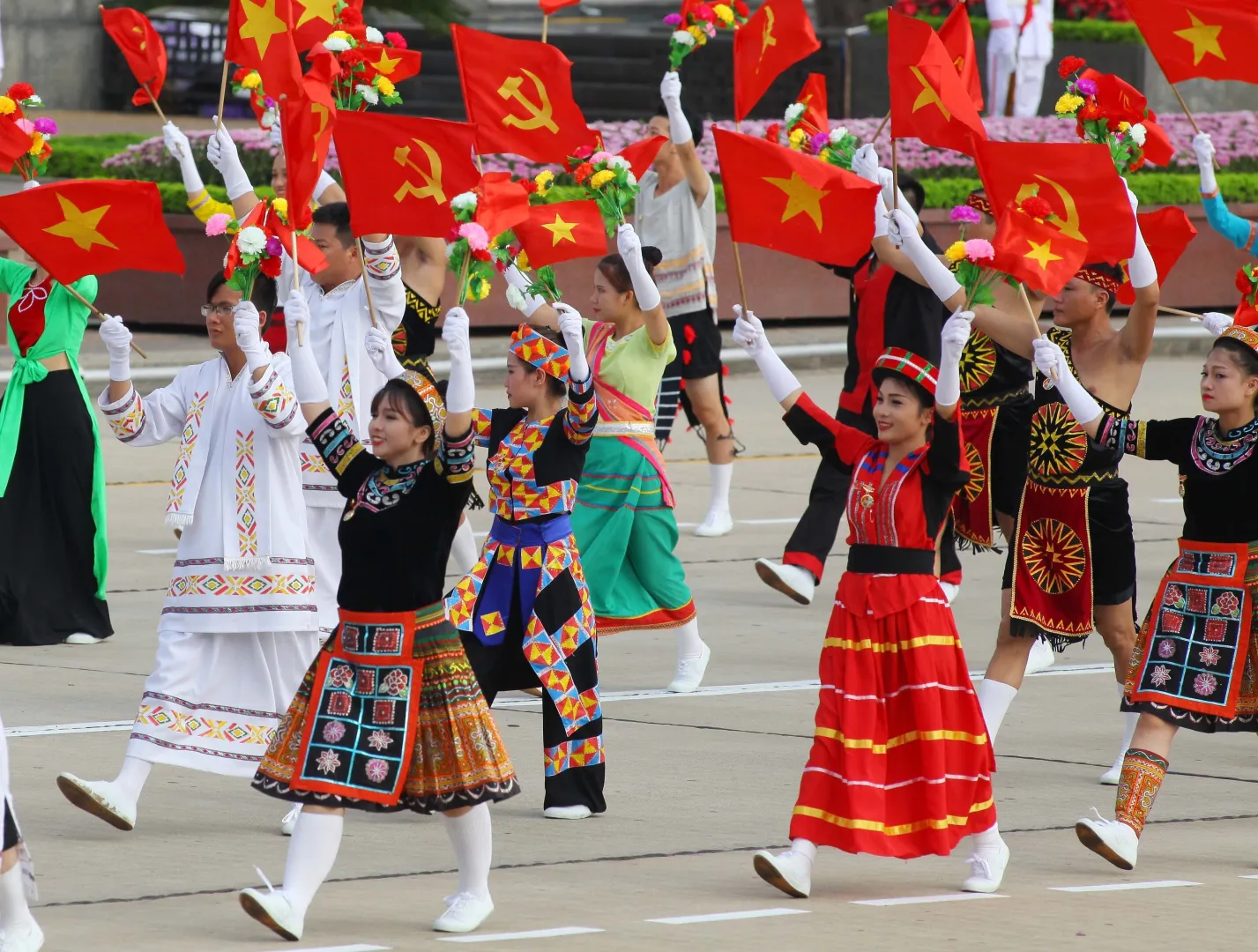 Above all, Vietnam’s culture shines through its people. It is the true essence of the country, besides its stunning lands and history. One of the most cherished aspects is the tradition of sharing food, which is not only seen during family time but also during daily community interaction. Sharing a cup of tea or snacks with a local is how a heartfelt conversation starts. All together, the genuine warmth of Vietnamese hospitality is seen in every aspect.
Above all, Vietnam’s culture shines through its people. It is the true essence of the country, besides its stunning lands and history. One of the most cherished aspects is the tradition of sharing food, which is not only seen during family time but also during daily community interaction. Sharing a cup of tea or snacks with a local is how a heartfelt conversation starts. All together, the genuine warmth of Vietnamese hospitality is seen in every aspect.
Tapestry of Vietnamese People: A Journey Through History, Culture, and Tradition
The origin and culture of the Vietnamese people are deeply rooted in ancient history and traditions. From each period, Vietnam’s cultural heritage evolved over thousands of years, blending tactfully the indigenous customs with external influences. Today, Vietnam stands as a proud nation with a unique identity, shaped by its past and embraced in its modern achievements. Whether you are exploring ancient temples, tasting traditional dishes, or celebrating local festivals, understanding the roots of Vietnam’s history will undoubtedly enhance your cultural experience.
